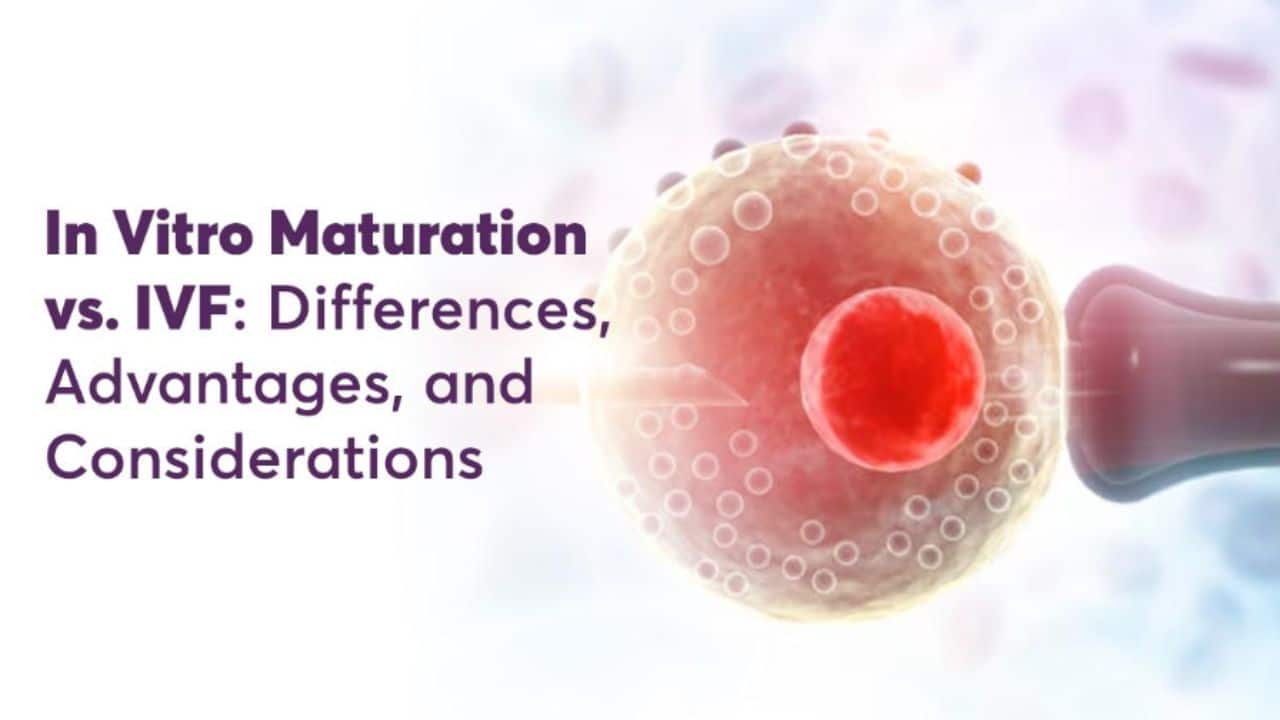In vitro maturation (IVM) and in vitro fertilization (IVF) are both assisted reproductive technologies (ART). Many people are not aware of the IVM treatment; it also helps with conception or fertility preservation, similar to IVF. However, the way in which IVM and IVF perform differs, each has its own advantages and characteristics. In this blog, we will look into what both procedures entail, the differences between each procedure, and things to consider if you are taking into account IVF and IVM as fertility treatment options.
What is In Vitro Maturation (IVM)?
In Vitro Maturation (IVM) is a more modern ART treatment than traditional IVF. IVM begins with the retrieval of immature eggs from a woman’s ovaries. IVM does not involve stimulating the ovaries to develop mature eggs, as this technique allows the immature eggs to mature in the laboratory. After the eggs have matured, they are fertilized with sperm, and the embryos are then transferred into the uterus.
What is In Vitro Fertilization (IVF)?
In Vitro Fertilization (IVF) is a well-known method of ART. IVF involves stimulating the ovaries with hormone injections and retrieving multiple mature eggs from the ovaries. The mature eggs are fertilized with sperm in the laboratory, and embryos are allowed to develop for several days before transferring them back to the uterus.
Difference: IVM vs IVF
1. Ovarian Stimulation:
- IVM – In IVM, ovary stimulation is minimal. This could be an important benefit for those who are at risk of ovarian hyperstimulation syndrome (OHSS) or prefer a less invasive method.
- IVF – In IVF, the ovary is stimulated with a hormonal injection to produce multiple eggs. IVF injections help your body produce more eggs, which increases the chances of fertilization and implantation. However, this method may also present a higher risk of developing OHSS.
2. Egg Retrieval:
- IVM: The retrieval of the eggs using this method is completed while in immature stages of development, and egg maturation occurs in the lab. This can be beneficial for those individuals who previously had poor results with ovarian stimulation.
- IVF: In IVF procedure, mature eggs are required, therefore the duration of hormonal stimulation is longer. This helps to develop the eggs to maturity so they can be retrieved.
3. Success Rates:
- IVM: In general, the success rates in IVM are lower than in IVF. Part of the reasoning is that IVM is relatively new. Since only a small number of children have been conceived using IVM, information about safety regarding malformation and developmental outcomes is not yet fully known. Thus, IVM success rate cannot be fully ratified.
- IVF: IVF is more established and tends to have a higher success rate due to successful pregnancies and refinement of the treatment.
4. Cycle Length:
- IVM: IVM procedure is typically shorter as there is no need to undergo a prolonged ovarian stimulation phase.
- IVF: IVF procedure is longer compared to IVM, as you must receive stimulation and monitoring while going through several steps during the cycle.
5. Cost:
- IVM: IVM could be more cost-effective because there are fewer medications needed to control the ovarian stimulation and a potential shorter cycle. However, the cost of the treatment depends on the clinic and the condition of the infertility.
- IVF: IVF usually costs significantly more because of medications, monitoring, and the entire IVF process. However, the cost of the treatment again depends on the clinic and the condition of infertility.
Benefits: IVM vs IVF
In Vitro Maturation (IVM):
IVM decreases the risk of ovarian hyperstimulation syndrome because you have decreased stimulation of the ovaries. The need for medication is not as extensive as IVF, which lowers the overall cost. Shorter cycle/treatment period could be more convenient for the patient.
In Vitro Fertilization (IVF)
IVF has higher success rates, as they are professionally established on basis of large volumes of research and experience in assisted reproduction. IVF, preimplantation genetic testing (PGT) is an advanced technique which is used to analyse if there are any abnormal genetics that offer a high risk of miscarriage.
Considerations: IVM vs IVF
For IVM:
- Availability: Not every fertility clinic offers IVM, so availability may differ depending on where you live.
- Experience: There may not be as many clinics with extensive experience with IVM, which may impact success rates.
For IVF:
- Time Commitment: IVF usually requires more of a time and commitment, as IVF is usually a longer process.
- Invasive in nature: As IVF treatment is invasive in nature, it may cause certain emotional and physical distress throughout the treatment.
Conclusion
The choice between In Vitro Maturation and In Vitro Fertilization really comes down to your own situation, preference, and fertility challenges. IVM offers a less invasive option and minimal medication, but it is a newer procedure with lower success rates. IVF is a well-established and recognised method, has higher rates of success, and requires a more invasive and intensive intervention. These factors must be discussed with a fertility specialist at a fertility centre in order to effectively weigh the advantages of each method and how it suits your needs.







































